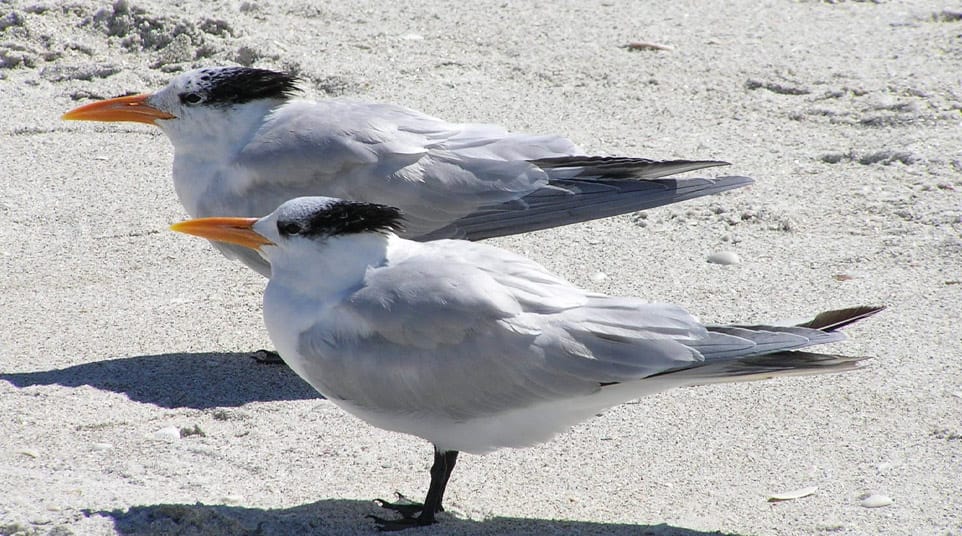- Home >
- Travel Guide >
- Galapagos Islands >
- Animals & Wildlife >
- Galapagos Royal Tern
Galapagos Galapagos Royal Tern Facts
Name: Royal Tern
Family: Sternidae
Scientific name: Sterna maxima
Length: 45 - 51 cm (17.7 - 20 in)
Weight: 350–450 g (12–16 oz)
Wingspan: 76 - 80 cm (30 - 31.5 in)
Category: Sea Birds
Number of Species: 47
Endemic Species: 13
In total, 47 species of sea birds have been recorded in the Galapagos, 19 of which are resident to the Islands. The sea birds therefore account for nearly one third of all the species ever recorded in the islands and about the same proportion of the resident species.
Seabirds can be conveniently divided into 12 groups, as show in the table below. This shows the number of species recorded in each group and summarizes their status. If also shows the number of endemic species and the number of other species which are represented by endemic subspecies. Species are treated as migrants if they occur annually, vagrants being those recorded less frequently.
Category: Sea Birds
Family: Sternidae
Endemic Subspecies: Common Noddy
Six species of terns have been recorded in Galapagos: 2 residents and 4 vagrants. Terns are similar to gulls in many respects but are generally smaller, with narrower wings; thinner, straighter bills which lack the marked gonydeal angle; and shorter legs. Whilst terns are usually predominantly gray and white, the two species that breed in Galápagos are wholly dark brown (Common Noddy) and black and white (Sooty Tern). The sexes are alike. Terns feed by picking food from the surface of the water or by plunge-diving.
Regular migrant in small numbers, most records having been from the south of Isabela Island and Santa Cruz Island from January to March. Breeds in North America, the Caribbean and northern South America, some birds migrating to winter along the north-west coast of South America.
Identification:
A large, stocky tern with a heavy, orange bill and black legs. ADULT BREEDING: Upper parts pale gray; under parts white. Black crown, extending from bill to nape. In flight shows white forked tail and dark trailing-edge to primaries on under wing. ADULT NON-BREEDING: Similar to adult breeding but lores, forehead and forecrown white, merging with variable black spotting on crown, to shaggy black nape. FIRST-WINTER: Resembles non-breeding adult, but has dark brown markings on wings.
Voice:
A loud, harsh "kee-reer'
Behavior:
Could be mistaken for a Galapagos gull due to its large size and powerful flight. When feeding, flies relatively high over the water and plunge-dives or surface-dips.

